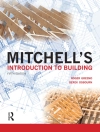This book addresses the fundamental theory and key technologies of narrowband and broadband mobile communication systems specifically for railways. It describes novel relaying schemes that meet the different design criteria for railways and discusses the applications of signal classification techniques as well as offline resource scheduling as a way of advancing rail practice. Further, it introduces Novel Long Term Evolution for Railway (LTE-R) network architecture, the Quality of Service (Qo S) requirement of LTE-R and its performance evaluation and discusses in detail security technologies for rail-dedicated mobile communication systems. The advanced research findings presented in the book are all based on high-speed railway measurement data, which offer insights into the propagation mechanisms and corresponding modeling theory and approaches in unique railway scenarios.
It is a valuable resource for researchers, engineers and graduate students in the fields of rail traffic systems, telecommunication and information systems.
İçerik tablosu
Review of the Development of Dedicated Mobile Communications for High-Speed Railway.- Key Issues for GSM-R.- Radio Propagation and Wireless Channel for Railway Communications.- Cooperation and Cognition for Railway Communications.- Interference and Radio Resource Management in Mobile Communications for High-Speed Railway.- LTE-R Network.- Security of Dedicated Mobile Communications for Railway.- Channel Simulation Technologies for Railway Broad-Band Mobile Communication Systems.- Future Work and Challenges.












